|
|
 |
|
Fora, Monti, and Celio, compare and contrast |
|
written
by calaroni / 09.17.2004 |
|
|
|
|
|
| <click to type page headline> <use TAB to move to next textbox> |
1 of 1 |
|
| |
The social characteristics of the residents |
| |
| |

|
| Photo by Kirstin Wiederholt |
| Well Dressed Business Men in Celio |
| Most of the people we saw walking arround Celio were in business attire, such as the men pictured here. |
| |
|
| |
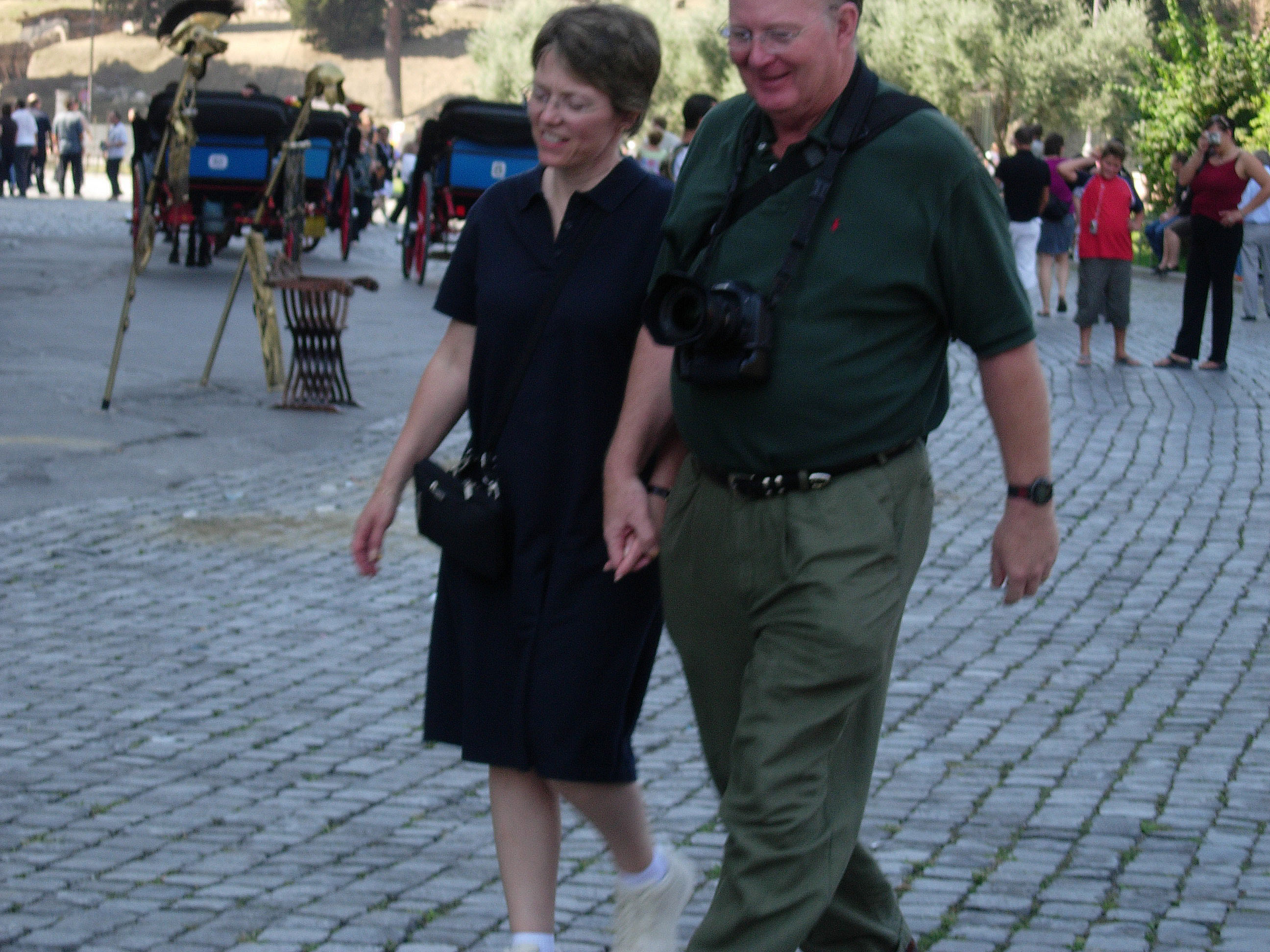
|
| Photo by Kirstin Wiederholt |
| Tourists in Fora |
| Like this couple, most of the people we saw walking in Fora were blatantly tourists, complete with backpacks and cameras. Most seemed to be of Northern European descent. |
| |
|
| |
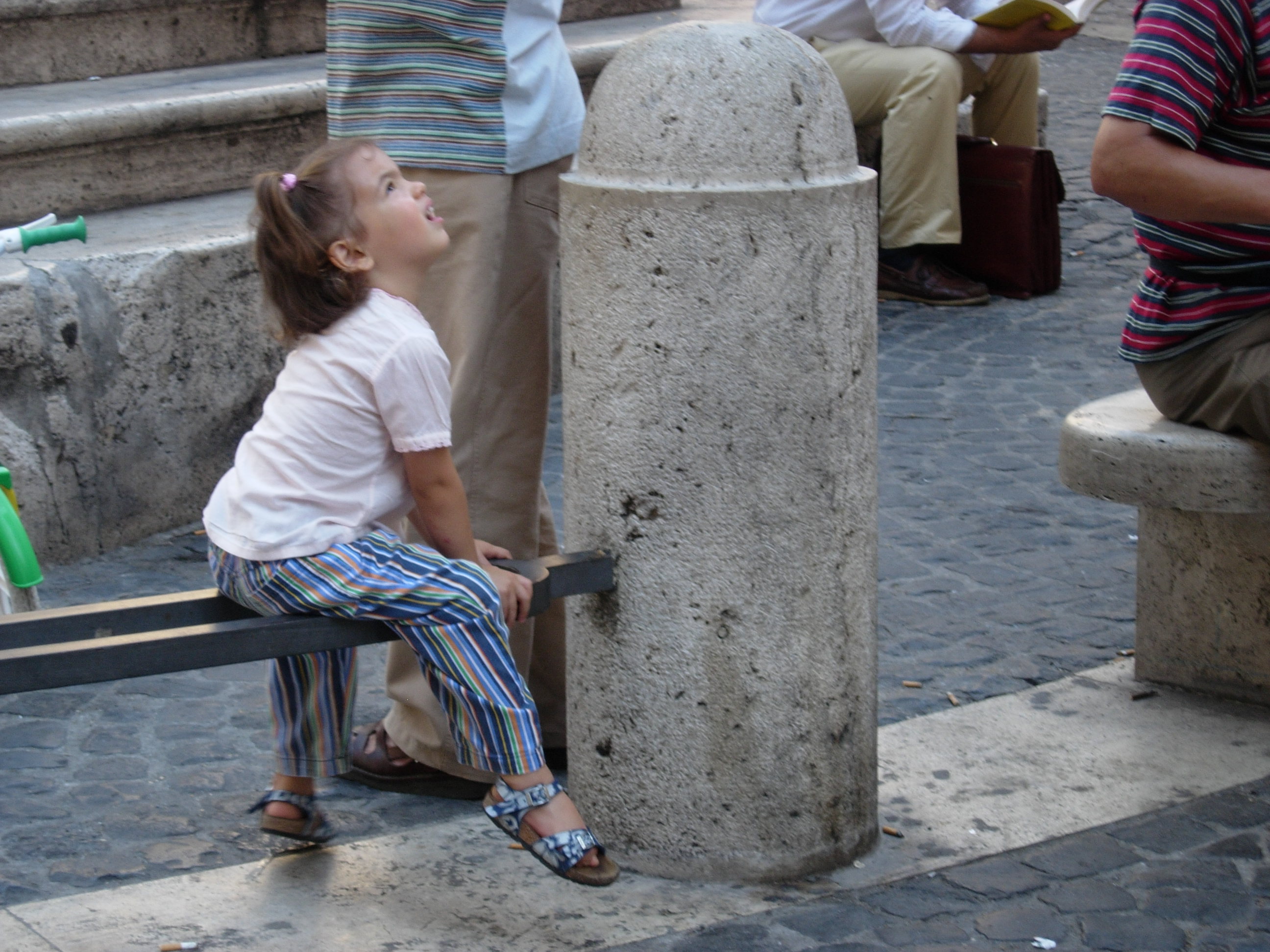
|
| Photo by Kirstin Wiederholt |
| Child playing by fountain |
| Unilke the other neighborhoods we looked at, we saw people of all ages walking arround Monti, including young children. |
| |
|
| |
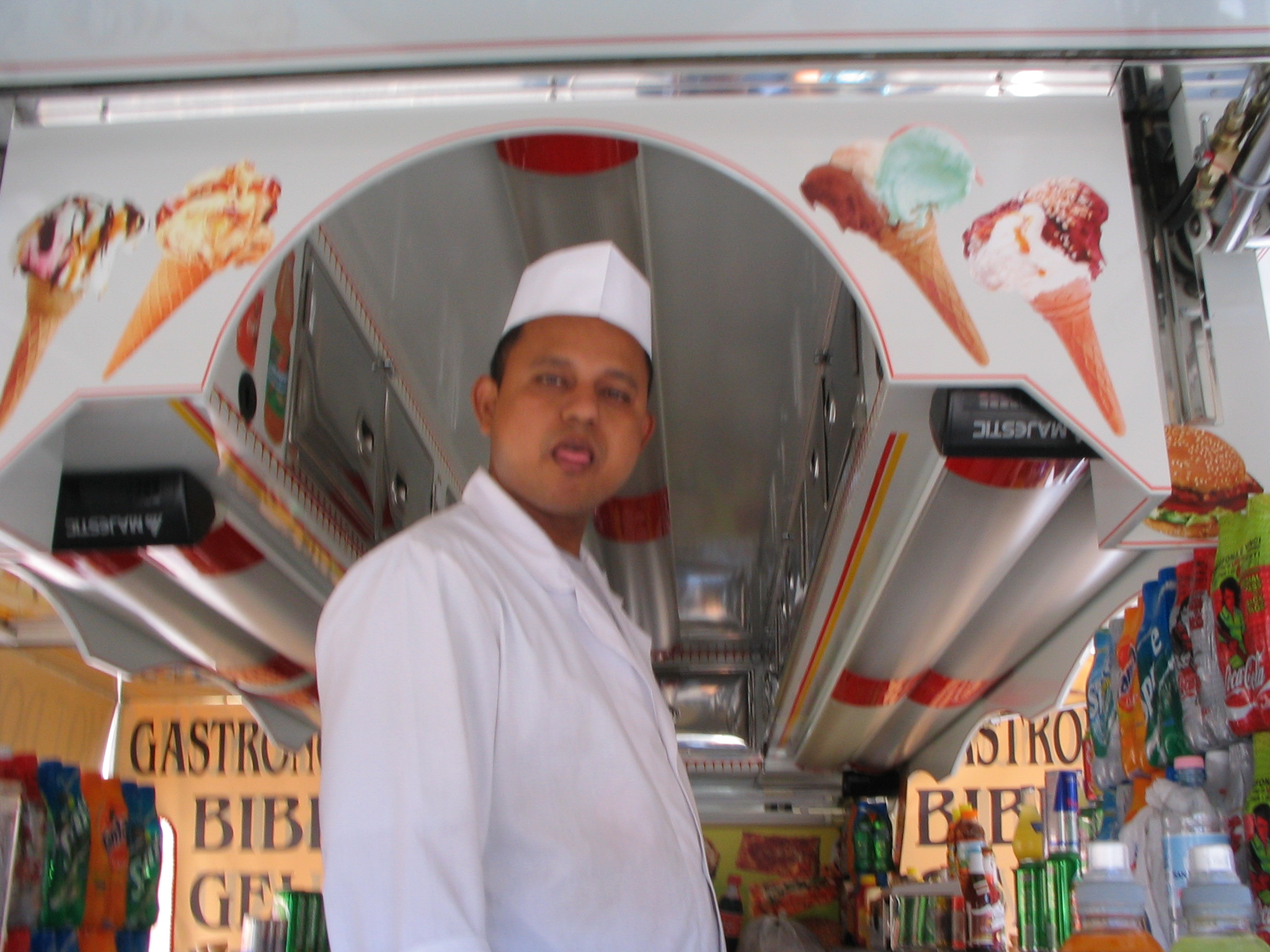
|
| Photo by James "Smokey" Kuo |
| Tourist Stand Attendant |
| Here is an immigrant that is manning a stand selling overpriced, low-quality food to tourists. |
| |
|
Celio:
Most of the people we passed in Celio appeared to be Northern Italians (light-skinned), most of whom were in their early thirties dressed in suits and business attire, both men and women. In addition to the businessmen and women, we saw three men in army uniforms, perhaps because there is a Stazione Carabiniere in the center of Celio. During our time in Celio, we saw no one who looked younger than thirty. After walking only one block from the Colosseum, very few immigrants or tourists were seen. This is a very high-end neighborhood because there are many large fancy cars (BMW, Audi, Porsche), very well dressed individuals, and incredibly clean streets with no litter and no beggars. The overall feel of Celio was very ritzy and yuppy.
Fora:
Fora, near the Roman Forum, is an area filled with tourists of all ages, mainly European and American. There are no real residents in the area of Fora. There are numerous stands manned mainly by older immigrants throughout Fora selling tourist items. The Italians manning the booths looked Southern (dark-skinned), and the immigrants appeared to be from East Asia. Because of the jobs people were employed at in this area, the employees in Fora are probably lower to middle class. There was no obvious sexual preference noted.
Monti:
Throughout Monti, there seems to be more Southern-looking (darker-skinned)Italians than Celio. The residents of this area are of all ages, from old to young. Monti not nearly as upper class as Celio as they do not drive as nice of cars, there are more people begging, and there are more dirty streets. Although it may not be as nice as Celio, the residents of this area are probably middle to upper class because it is in the heart of historical Rome. We asked a man in a shop about the area, and he stated that it was very expensive to live in Monti. There may also be some less expensive living in the area as it is likely that there are a number of immigrants in this area. We saw several Chinese restaurants and a sign written in Russian in Monti, evidence of either immigrants or a destination for foreign visitors. On the main street, Via Cavour, there are many tourists, but once you move away from Cavour, very few tourists can be seen.
|
| |
|
| |
|
| |
The distinctive economic and consumption activity in the neighborhood |
| |
| |

|
| Photos taken and edited by Kirstin Wiederholt |
| Grocery Store at the Edge of Celio |
| This grocery store illustrates how the upper-class of celio co-exist with the throngs of English-speaking tourists teeming at their borders. The inside of the grocery store is clean and well lit, while the English sign (posted above the produce) informs outsiders of the correct proceedure. |
| |
|
| |

|
| Photo by Kirstin Wiederholt |
| Groups of Tourists in Fora |
| Masses of Tourists in Fora; in the backgroud are visible the some of the street stands that sell souveniers and snacks to these tourists. |
| |
|
| |
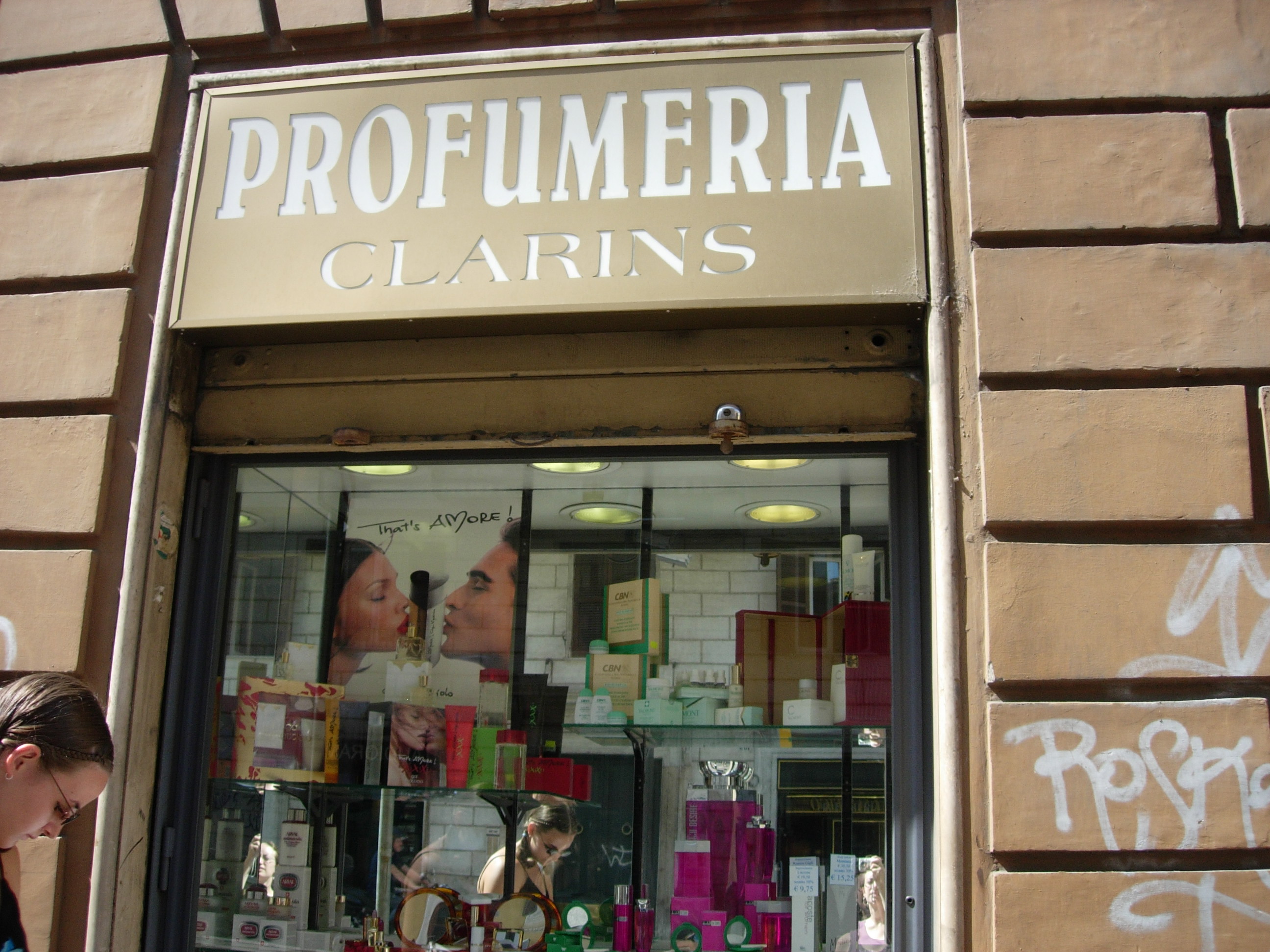
|
| Photo by Kirstin Wiederholt |
| Profumeria in Monti |
| Like this Purfumeria, most of the shops in Monti seemed to cater to the residents there. |
| |
|
Celio:
At the edges of Celio, the restaurants heavily cater towards tourists, posting large signs in English and having English-speaking waiters soliciting people passing by. There seemed to be a gap in economic activity between the tourist edges and the interior, perhaps to deter tourists from entering. The grocery store near the edge of Celio has wide, well-lit aisles, plays only Italian music and is very clean, evidence that the neighborhood is upper class. There are, however, large signs in English, not to advertise, but rather to direct wayward tourists into using the correct procedure. Many shopkeepers understood English. Within Celio, there are more trendy shops, furniture shops, plant shops, a lamp shop and an auto club, and a few smaller restaurants. Such shops tend to serve residents and suggest that mainly locals shop in the area. We dined at a little cafe specializing in tea, serving skimpy but expensive salads, panninos (much to Sabrina's surprise), and trendy but bad-tasting dishes. On the whole, however, Celio seems to be mostly a residential area.
Fora:
All of the economic activity in Fora is aimed at the masses of tourists in the area. Nearly everything sold in Fora, including snacks and drinks for hungry tourists, as well as souveneirs and trinkets, is concentrated on the throngs of tourists rushing past. In comparison with Monti and Celio, more beggars are present in Fora.
Monti:
In the Monti neighborhood, there are some small restaurants and bars, mainly focusing on the locals in the area. The main street, Via Cavour, provides shopping for tourists as well as locals with souvenir shops, leather shops, electronic shops, and make-up shops. Further into Monti, we found small family-owned groceries markets and bookstores. There are many fewer men in suits as compared with the Celio neighborhood.
|
| |
|
| |
|
| |
Generalizations about the character/culture of the area |
| |
| |
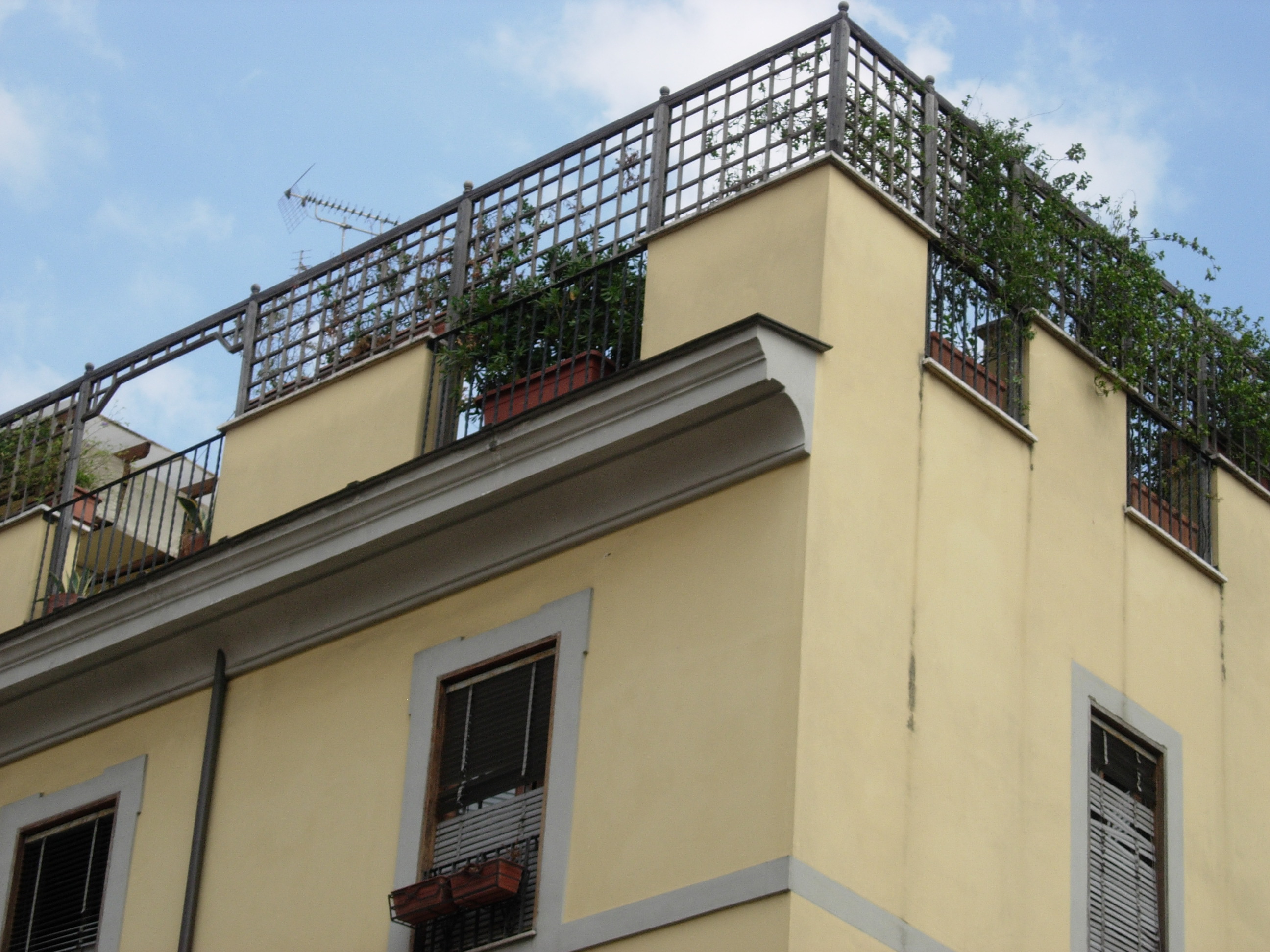
|
| Photo by Kirstin Wiederholt |
| Manicured Balcony in Celio |
| This balcony is the newer and more manicured than most balconies we've seen in Rome, evidence of upper-class inhabitants of Celio. |
| |
|
| |
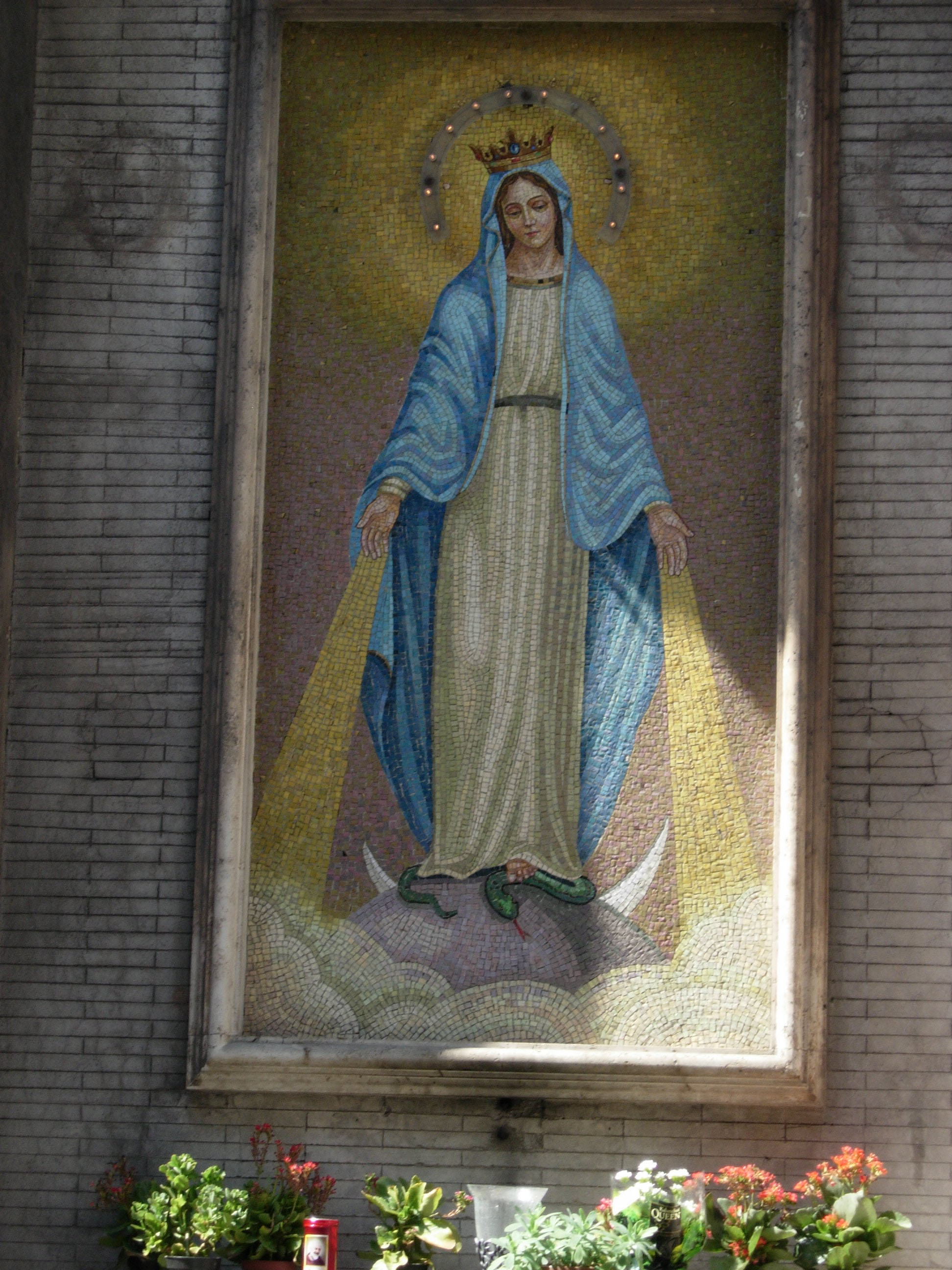
|
| Photo by Kirstin Wiederholt |
| Shrine in Monti |
| Monti had several shrines throughout the streets, such as this one. |
| |
|
| |

|
| Photo by James Kuo |
| Keep Out! |
| Some of the buildings in the Monti neighborhood had bars on the windows, possibly indicating a high crime rate. |
| |
|
Celio:
Walking through Celio, we were automatically struck by the clean and safe atmosphere of the neighborhood. Unlike the more historical sections of Rome, Celio’s streets are very gridlike, larger than most, and organized. Most streets are one-lane, one-way roads. There is significantly more designated parking along the sides of the streets in Celio than I have seen since. The streets and buildings are incredibly well-kept and clean and there is hardly any graffiti. The farther from the Colosseum we walked, the more graffiti we saw. Celio is a very ritzy and modern area, as seen by the new and modern apartments, and the modern art seen on some of the doors. Celio is not artsy in the way we have seen in other areas in Rome. There are few historical-looking buildings, no statues or fountains. Instead, there is a modern artistic sense. Even though Celio is close to the historical center of Rome, it appears very secular, as there are no street shrines, churches, or religious art. The Stazione Carbinieri and the cleanliness of Celio make the neighborhood feel very safe and secure. Despite the clean and rich atmosphere of Celio, we wouldn’t quite call it “hip.” As we didn’t see any young people in the neighborhood, it didn’t seem like the place to be if you are young and looking for a good time. There are many gelaterias in the area, but hardly any other places to hang out and have a good time. There are few cafes, and no bars, pubs or piazzas in which to gather. Celio is mainly a residential and business area.
Celio park, on the other hand, looks great from far away and down below, but is neither touristy, hip, or pretty from the inside. Litter (papers, alcohol bottles, clothing) covers the ground of the park. When we walked through the park, we only saw two other people, teenage girls. Graffiti covers the ruins in the park and it looks like homeless people sleep in the park at night. Although it may be the only place for young people of the area to hang out, we would not classify the park as hip whatsoever.
Fora:
Fora, although a fun place for tourists, is not a hip place for native Italians. It seems as though Italians, unless they are working there, stay as far away from these massive tourist attractions as possible. The Fora area is very artsy as there are two thousand year-old statues and monuments. As far as modern art goes (modern as in anything more recent than AD 1000), Fora is not the place to go. There are some churches near Fora, but because the Roman Forum is a celebration of pagan art, it is hard to consider it pious or secular.
Monti:
The Monti neighborhood had lots of graffiti, including political messages such as "Bush go home" and "Stop Wars" in "Star Wars" style font. Unlike Celio, there seemed to be a consistent amount of graffiti both near and far from the Colosseum. This area seemed more pious, as evidenced by the shrines and a church in the area. Unlike Celio, there are not many nice cars and the streets were dirtier, though still fairly clean. The architecture seems older and more artsy. There is a conspicuous fountain in the heart of Monti. The area seems more run down and much less ritzy when compared to Celio. People of all ages can be seen in the Monti neighborhod, but there are many more young people seen here than in Fora or Celio. There are more possible activities for young people to partake in, such as bars, pubs, and shopping. The apartments above the shops seemed very nice; they had large windows, balconies, lots of plants, and some even had trees. The streets of Monti seem much more Roman than the gridlike Celio. It had small piazzas and curving streets.
|
| |
|
| |
|
| |
Further observations |
| |
| |
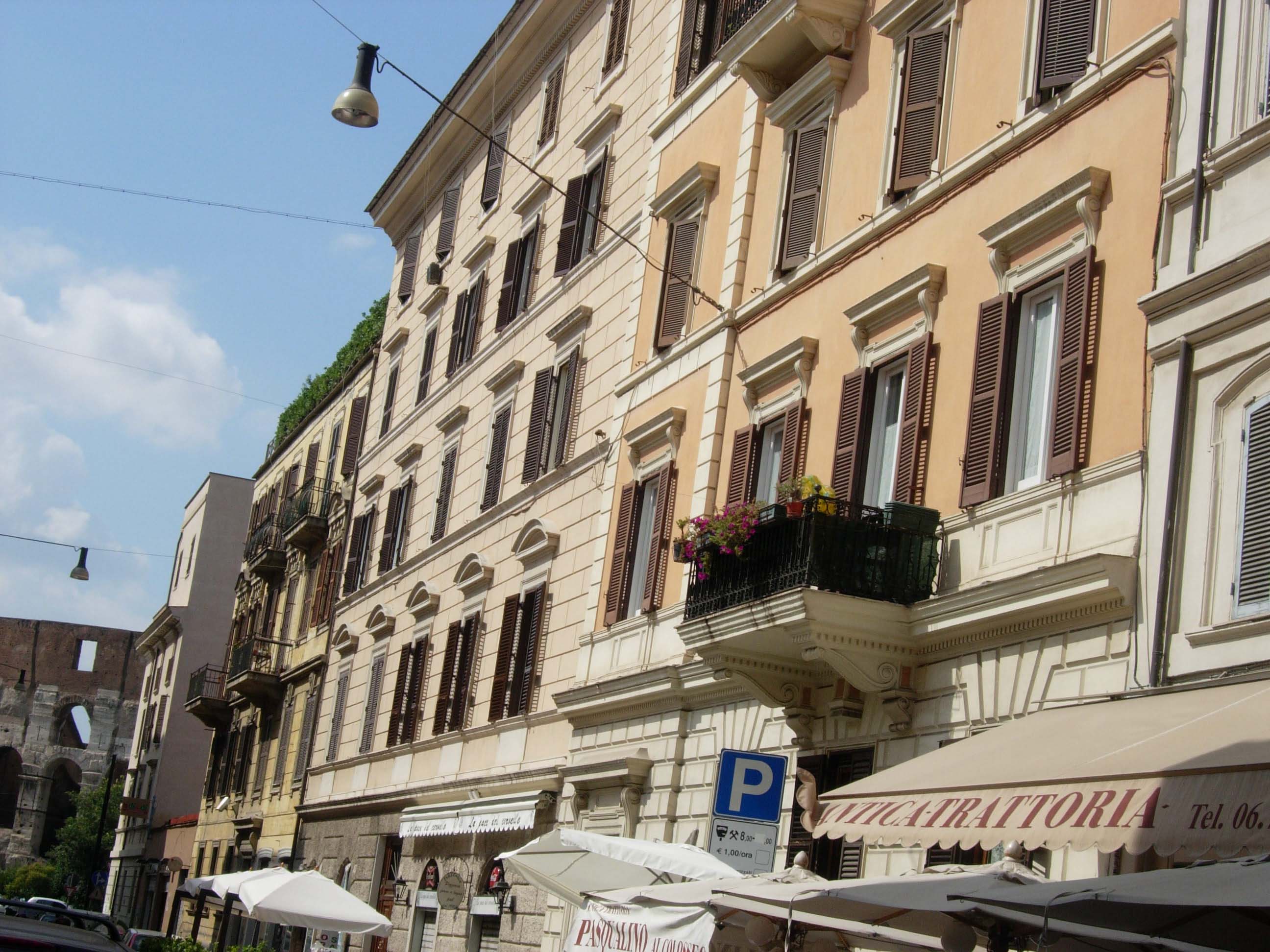
|
| Photo by Kirstin Wiederholt |
| Clean and Safe Celio |
| A view of a typical street in Celio, clean, new and well taken care of. |
| |
|
| |

|
| Photo by Kirstin Wiederholt |
| Protection from Tourists |
| This arch is one of the few entrances into the neighborhood of Monti from the Fora area. There is a very clear divide between the residential Monti and the touristy Fora. |
| |
|
| |

|
| Photo by James Kuo |
| Looming Not Far Away |
| With the Colosseum in the backdrop, Celio did not seem as affected as I predicted by the great monument. |
| |
|
In the time we spent in Celio, we never saw a dog, stray or as a pet. In nearby Monti, we saw several dogs.
Beyond the main street of Monti, Via Cavour, there are very few tourists. In the gelaterias and cafes away from the main roads, the employees did not speak English to us. This is a large contrast from even the Campo di Fiori where many shopkeepers understand some English. A wall seems to divide the tourist area near the Colosseum from the neighborhood of Monti. Also, because there are few tourist shops beyond the main road, it seems to detract tourists from going into the neighborhood. These little aspects of Monti are some ways the locals deal with the incredible influx of tourists. Such characteristics are subtle methods to keep the mainstream tourists out of the neighborhoods in Rome.
|
| |
|
| |
|
|
 |
|





